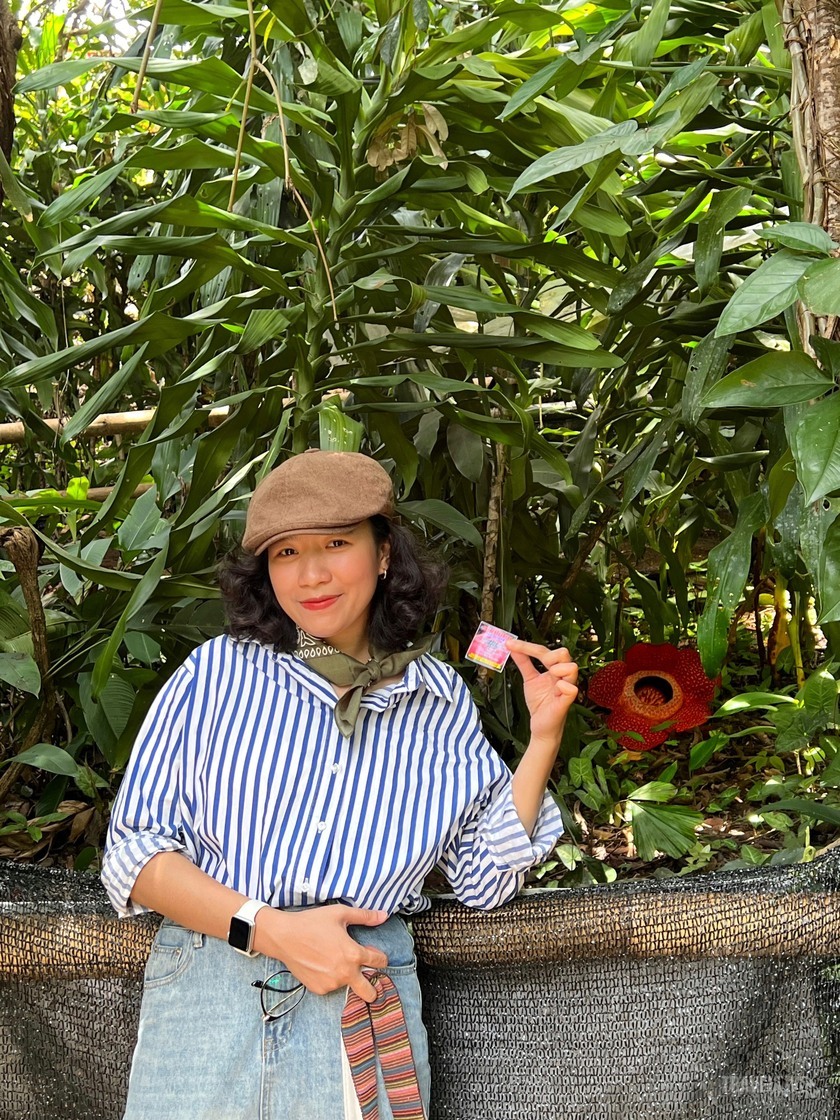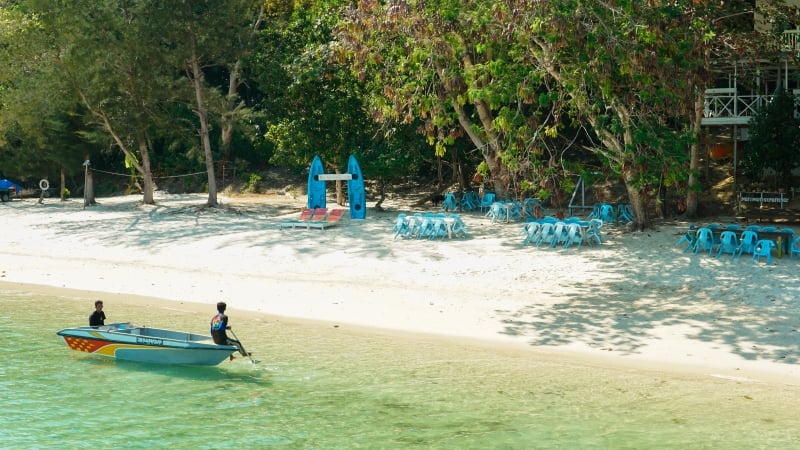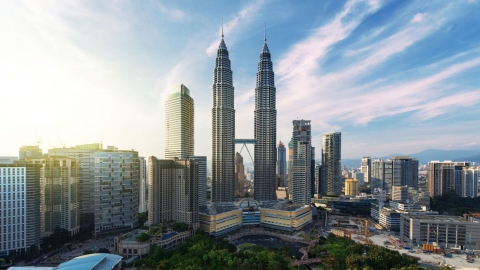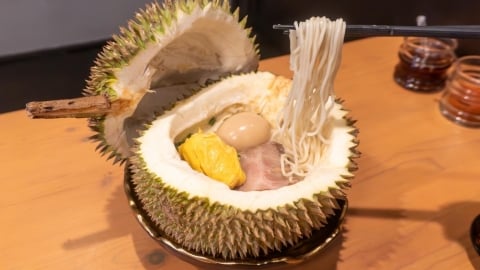Having the opportunity to visit Sabah state, Malaysia, we were lucky to be one of the guests who had the opportunity to admire the only Rafflesia flower blooming at its most beautiful time at the Kokob Rafflesia private conservation garden in Ranau highlands.
Known as a parasitic plant, the world's largest flower has a diameter of up to 1.2 m and a weight of about 10 kg. Rafflesia flowers have no leaves and no stem. Due to its enormous size and unique appearance, Rafflesia is known as the "king of flowers".

Rafflesia is actually a fungus, often parasitic on tree trunks. The flower's living conditions are quite specific, it only grows in damp places, with bamboo bushes and vines.
During its blooming period, the Rafflesia flower will produce a rotten smell like a corpse to attract insects and inadvertently help them pollinate. After that, the flower will wither to start a new cycle. Although the flower blooms with a bright red color dotted with white spots, when it emits a foul smell, it is often called the corpse flower.
There are about 30 species of Rafflesia in the world. Sabah, Malaysia is home to the largest number of Rafflesia with 9 recorded species. The time from germination to flowering ranges from 7-13 months. Accordingly, Rafflesia is a rare and endangered species, at high risk of extinction. Its habitat is being destroyed by deforestation and over-harvesting for traditional medicine.
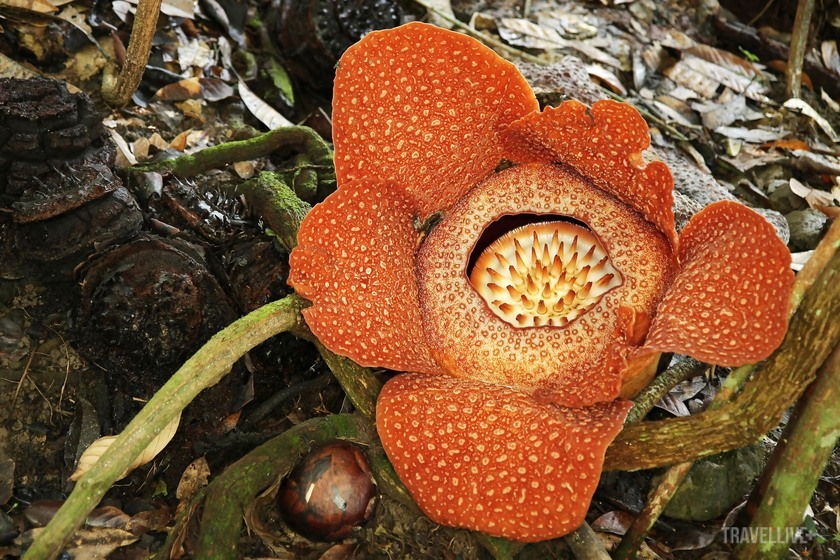
Dubbed the world's largest flower with a typical flower diameter of 80cm to 1.2m, Rafflesia is facing a serious risk of extinction.

To witness the world's largest flower from Sabah, Malaysia, visitors can visit the Kokob Rafflesia private conservation gardens.
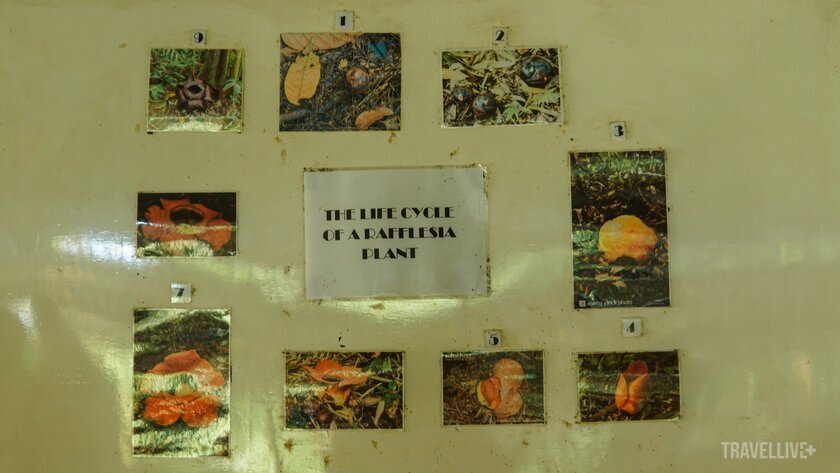
Before entering the garden, visitors are introduced to this species and see pictures of its development stages from small buds to flowering and then rotting.
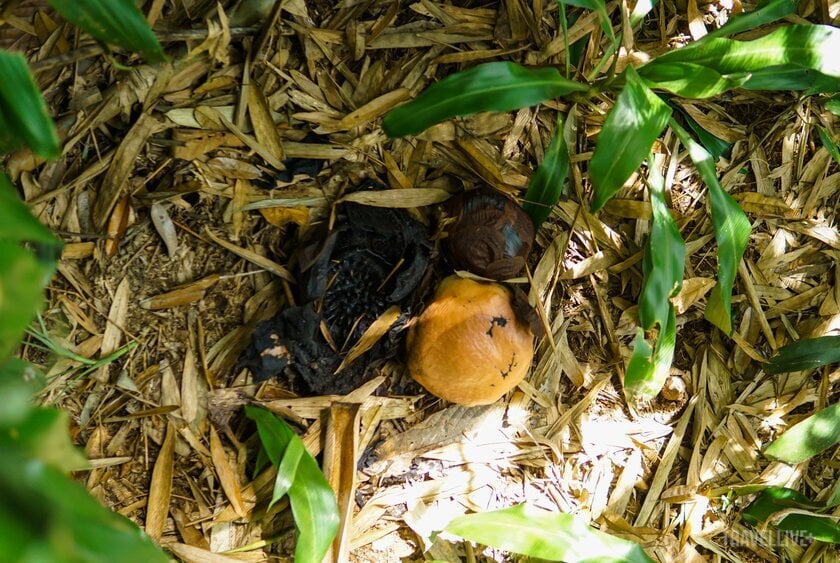
The rotting Rafflesia flowers are black and smelly next to other growing flowers.
Mr. Walter Deypalan, a tour guide in Kota Kinabalu city, Sabah state, said: "The conditions for this flower to grow are to be in the shade, away from sunlight, usually near bamboo trees because it can absorb water, and has a tree trunk to cling to. The life cycle from bud to full bloom ranges from 7 to 13 months and it only takes 5 days to wither. From the first to the fourth day, there will be no smell, but from the fifth day onwards, a foul smell will spread and then gradually decay."
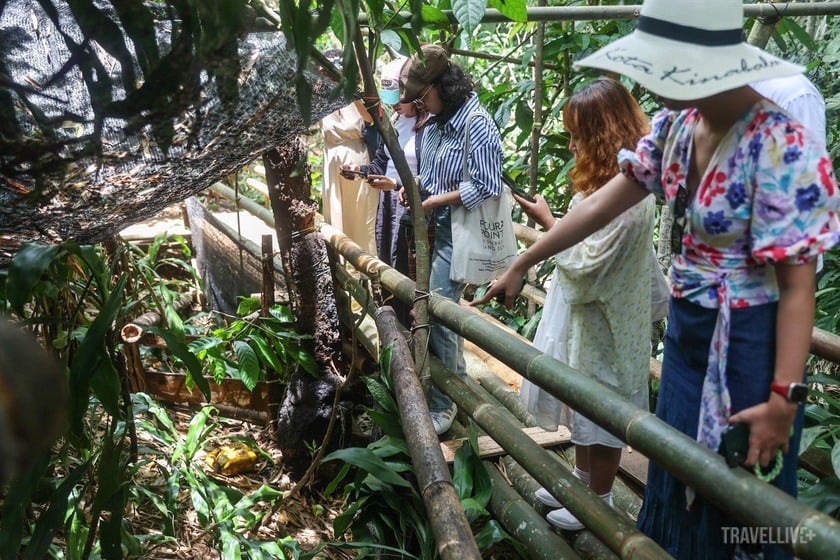
The Rafflesia flower that the lucky group of visitors were admiring bloomed from March 26 to 31. Because of the sensitivity of the flower's habitat, visitors can only admire the flower from a distance, about 2 meters.
Rafflesia with its strange and unique beauty, is a rare flower that any tourist coming to Sabah, Malaysia would like to admire once. Although blooming for a short moment, Rafflesia brings an impressive and surprising experience, arousing people's passion for exploring wild nature.
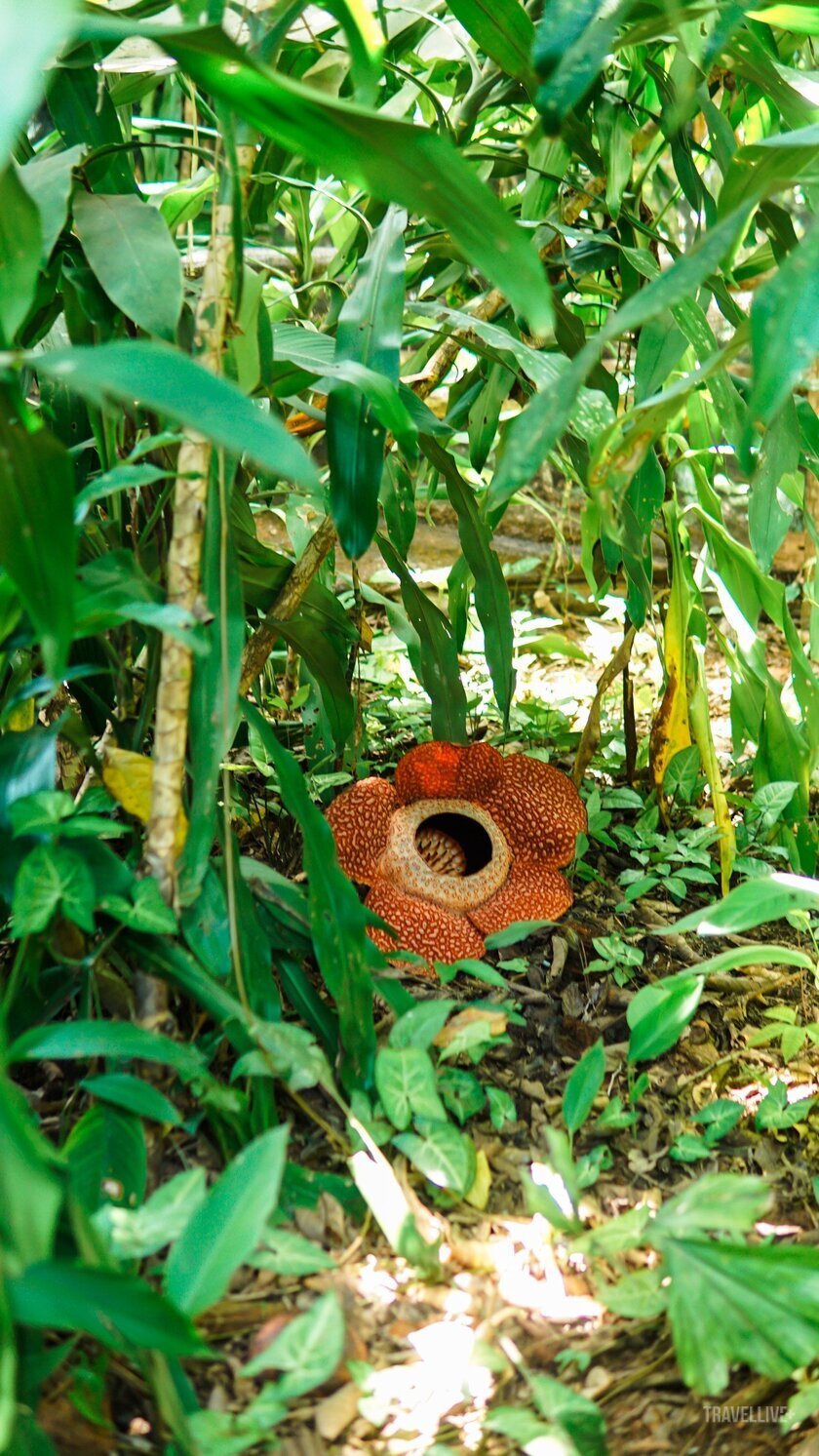
Giant red spotted flowers grow unpredictably, making them a must-see tourist product for many international visitors to Malaysia.

This flower also appears on the Malaysian 10 Ringgit note.
The presence of Rafflesia has played an important role in promoting ecotourism in Sabah. In the context of tourists increasingly favoring nature exploration activities, Rafflesia has become a unique highlight, attracting tourists to the wild and mysterious beauty of the rainforests.
Accordingly, travel companies also make a profit from selling tourist tickets to the site every time the Rafflesia flowers bloom. It is still difficult to predict the exact time, so each time the flowers bloom, the garden quickly notifies travel companies to sell tickets for visitors to admire.

The tour lasts about 30 minutes, visitors can buy more souvenirs such as flower-printed keychains at the ticket counter.
Kokob Rafflesia Private Conservation Garden in Ranau Highlands is about 120 km from the city center of Kota Kinabalu, Malaysia. The entrance fee is about 10 to 30 Ringgit per person (50,000 - 150,000 VND) depending on the number of flowers in the garden and whether you are a foreigner or a local. This flower also appears on the Malaysian 10 Ringgit note.
People at Kokob garden added that the end of March and beginning of April every year is the golden time for visitors to see this rare flower.
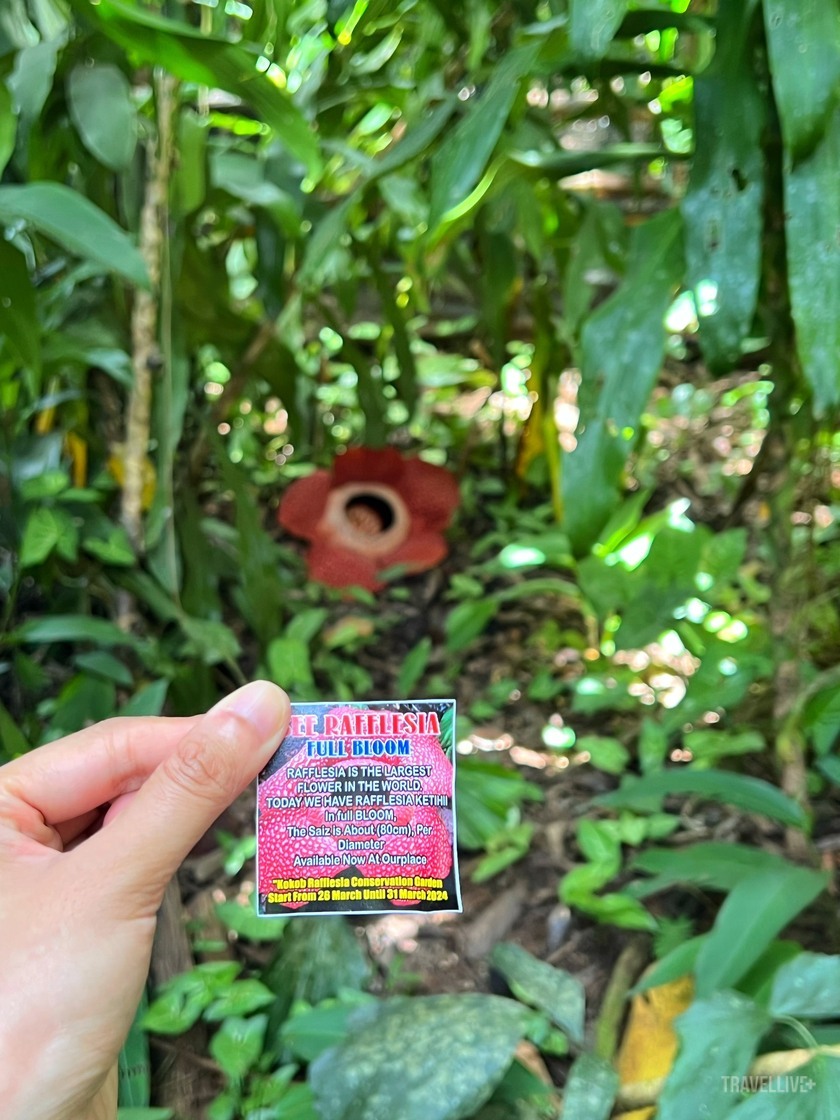
Entrance fee is about 10 to 30 Ringgit per person (50,000 - 150,000 VND) depending on the number of flowers in the garden and whether you are a foreigner or a local.
